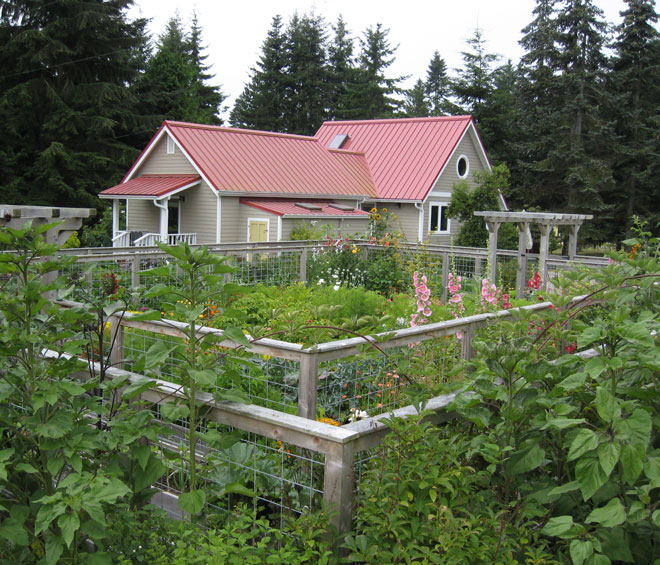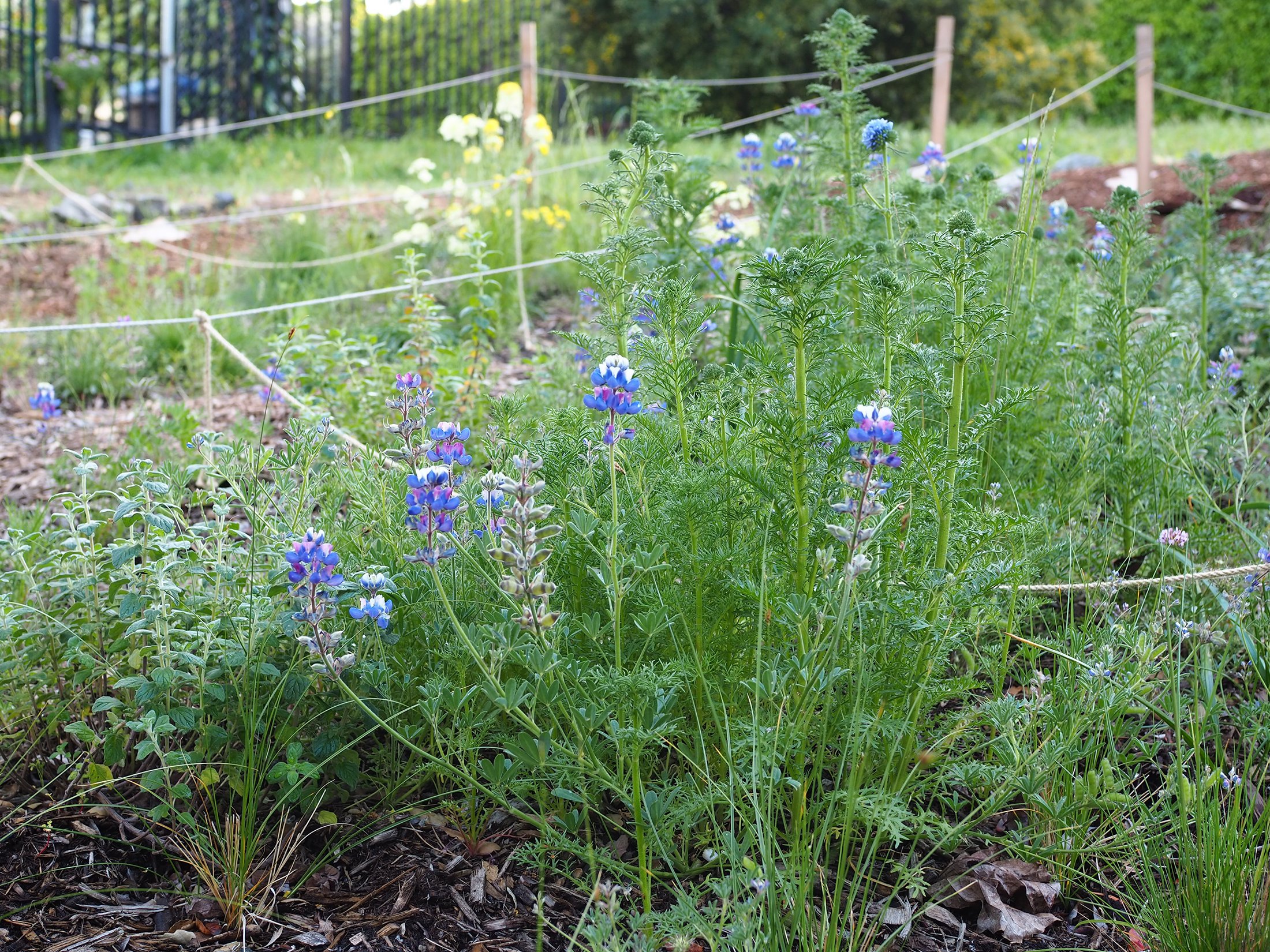
Defending Dinner

Contributor

No matter the sloppiness of the phrase, “Thanks for having me,” is a ubiquitous reply. Regardless of the guest’s pedigree—famous, best-selling author, PhD from that splendid university back east, aspiring singer, or political insider—when invited to share their humor or wisdom with whatever talking head, who then thanks them for coming, the guest’s final comment is almost always the same: “Thanks for having me.”
Why not, “Thanks for inviting me,” or “It was a pleasure to join you.” Or even, “You’re welcome,” or “Thanks for giving me a chance to join you.” “Having me” could mean almost anything!
Now you know the sorts of things I ponder while gardening even as I pursue clever critters laying eggs in my best ‘Famosa’ cabbage or hiding amongst the parsley by day. It’s alarming to eat half a head of ‘Tennis Ball’ lettuce only to discover a large snail also enjoying my dinner. These are the beasts that are still worth one’s best conniving, the ones that wave as they flutter or crawl away from the kitchen garden saying, “Thanks for having me,” “Thanks for raising my children,” or “Thanks for supper!”
At our house, the only formidable garden predator we have succeeded in defeating is Western Washington’s Columbian black-tailed deer. They still wander down the hedgerow and eat an occasional Rosa moyesii ‘Geranium’ bloom or succulent leaf of Salix fargesii. They even come for afternoon naps now and again—usually three does, lying in the shade together. But they have never tried to get into the kitchen garden.

Five-Foot Fences
Five years ago, when we moved to this Kitsap Peninsula garden, it was exciting to see that our best sunshine was right in the middle of our fairly narrow, two-acre property. Food in the center of the garden—perfect!

But this lovely center of life seemed a poor place for an eight-foot fence made of plastic deer-fencing material. Then I remembered a picture I saw in a magazine some years ago: it included two wooden fences, five feet high, separated by a five-foot gap. The gap was hard-packed soil, as if it might have been used for walking or a dog run, but the caption made it clear that deer could not jump over those two five-foot fences, placed five feet apart. The combination of height and breadth was too difficult for them to attempt.
So we built our kitchen garden to the following dimensions: a thirty-five by fifty-two-foot rectangle enclosed by a five-foot fence. The outside fence encloses an eighteen-inch bed, then a two-foot gravel path, then a thirty-six-inch bed, down the middle of which runs the second five-foot fence. The fences are made of galvanized graduated hogwire and fir. In the center of each of the thirty-five-foot sides of the rectangle is a gate with a trellis, sturdy enough to hold my favorite rose, ‘Darlow’s Enigma.’

The fences and beds continue all the way around the four sides of the rectangle with a large, central gravel path running the length of the garden, connecting the gates at either end. Within our double fence we’ve built sixteen three-foot by ten-foot beds. Inspired by a May 1997 article in Kitchen Garden magazine, the beds are constructed by screwing the supporting sides into upright posts at each corner and along the length of each planting area. This approach allows us to easily remove a single rotting board without having to redo an entire bed.

[sidebar]Each panel of hogwire is attached to the top and bottom fence rails with one-inch galvanized fence staples. The hogwire is framed by 1-inch side stops that are attached to four-by-four posts with galvanized nails. The bottoms of the wooden posts are wrapped with a water barrier fabric to deter rotting. Fences are capped with one by six-inch lumber; gate and arbor support posts are six inches by six inches. Garden paths are lined with weed barrier and topped with three to four inches of gravel. [/sidebar]
Design Advantages
As it happens, keeping deer out is not the only advantage of our kitchen garden’s design. We have built in trellising for peas, beans, and small pumpkins, such as ‘Jack-Be-Little’ and ‘Baby Boo’. Climbing zucchinis, tomatillos and tomatoes have a firm support to lean on or tie up to, but the large open areas of the fencing do not block air circulation, a healthy benefit in our sometimes damp climate where fungal issues are a constant concern. Slugs and snails are not crazy about trotting across the gravel, but once they find a way inside, they unpack and settle down. Vigilance is still vital.
Accurate maps of crop placement for each of the four years we have enjoyed planting our new kitchen garden keeps us from failing to rotate crops carefully. So far, we have enjoyed planting and harvesting good crops of onions and garlic, brassicas of all sorts, potatoes, corn, sorrel, squash, rhubarb, arugula, beans, peas, and even (mostly green) tomatoes.
I guess a garden’s design can’t make up for our recent run of cool summers. Regular as clockwork, another rainy day rolls in, as if to say “Thanks for having me.”
Share:
Social Media
Garden Futurist Podcast
Most Popular
Videos
Topics
Related Posts

January Showers Bring February flowers…
Fall 2022 It may not quite have the same ring to it as the old English proverb, but it has a lot more truth to

Healing Gardens
Spring 2022 Emily Murphy believes gardens hold the key to saving our health, our communities, and our planet. In her new book Grow Now Murphy

Your Keystone Plant Matrix with Garden Futurist Doug Tallamy
Spring 2022 Listen to the full Garden Futurist: Episode XIV podcast here. If you take Keystone plants out of your local food web, the food

A Botanical Force
Inside one of the many greenhouses at Log House Plants, which offers more than 2,500 varieties of annuals, perennials, vegetables and herbs each year, including










Responses